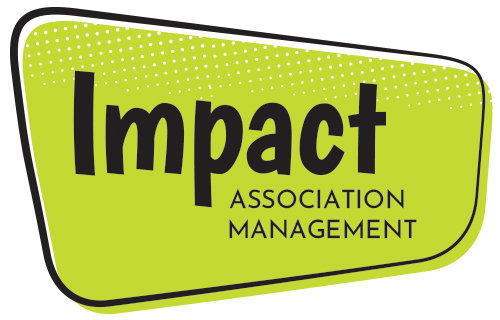3 Resources for Young Professionals
Many associations are facing the issue of watching their association gray out. They have recognized the need to grow their young professional market but are left questioning how to do that. It is not an easy task to grow any segment of your association but this is especially true for young professionals. Younger generations are not seeing the need as much to join associations and/or don’t have the money to put towards an organization membership. If you are ready to put in the work to grow your younger members, here are a few resources they might be looking for out of your organization.
The Keys to Member Onboarding
A board’s focus often leans towards membership recruitment rather than the steps that follow. Although it is important to recruit new members to grow your organization, it is equally important to make those new members feel welcomed. Creating a welcoming environment will increase member retention and could in turn help to recruit new members. New member retention increases 10% when a new member onboarding plan is implemented. (Memberclicks)
This plan, as simple or complex as you make it, is the key to growing and retaining your membership. There are a few things to keep in mind as you start to formulate a strategy.
Set goals. Why are you doing a member onboarding plan? This is an important question to ask yourself as you begin the process. Setting clear and measurable goals will allow you to look back and see if the work was worth it, if the plan is working, or if things should be tweaked.
Get started ASAP! In a world of instant gratification, you can never be too quick to reach out to your new members. Even if the first message they receive is automated, you are moving in the right direction. Verify that you received their application or membership and welcome them to the organization.
Add some variety. We all know what it is like to receive email after email from companies and organizations. Find creative ways to reach your new members. Consider starting with a welcome email, then sending a direct mail letter, or a phone call from one peer to another. Mixing up who the messaging is coming from is also a great way to introduce the member to a variety of contacts within the organization.
Make it personal. There is nothing less enticing than an email that clearly went to everyone. Including the member’s name is one way to increase their chance of reading the message. If it feels like an automated message, it will get thrown in the trash very quickly.
Take personal to another level. Aside from personalizing messages with specific names, understand the different groups within your audience. Create buckets for members such as first years, young professionals, large companies, etc. Personalizing the messages to these buckets will help to ensure members are actually getting what they need out of the organization rather than everything it has to offer.
Start looking into what you onboarding plan currently consists of and work from there. The sooner you can get something in place, the more members you will retain in the long run.
The Art of Retaining Members
We often get caught up in trying to bring new faces into the organization that we forget how important it is to retain current members. In order to have long term success, focusing on member retention should be at the top of your list. Below are a few tips on how to maintain that relationship and keep members coming back year after year.
1. Make onboarding a positive and welcoming experience. Make a good first impression on your members. Provide them with all the resources they need whether that is a “welcome package” or a contact for them to connect with. Take a look at the benefits members receive from your association and make sure these are all touched upon as the new member onboards. It also never hurts to add a little fun to this process. Include a small gift that relates to your industry or has your association logo on it or host a happy hour for new members – in person or virtual!
2. Survey members. Staying in the know on what your members want or need out of the association at a given time, is the best way to make them happy. Survey members at milestones of their membership such as 1 month, 6 months, a year, etc. You can also reach them when you are trying to make a decision as a board. Don’t assume, work to understand.
3. Be flexible with membership. If circumstances like COVID-19 arise, it is important to understand how that may affect members and their ability to pay for membership. Allow flexible options like pausing membership for a temporary amount of time or discounted membership types.
4. Communicate with members the way they want to be communicated with. If you have several types of emails that go out each month, allow members the option to subscribe to the emails they want to hear about rather than overwhelming them with communication that is not applicable.
5. Provide incentives for long term membership. Give members something to look forward to as they grow within the organization and reach milestones of 5, 10 , 20 years! Recognize long term members at your annual meeting, provide a gift for long term members when they reach a certain point, the options are endless. Making these members feel appreciated will encourage others to reach this point.
6. Survey members on their way out. Understand why members leave the organization by sending an exit survey. Ask open ended questions that will help you to understand how to better improve your organization.
Always continue to recruit new members but don’t forget to take some time understanding and pleasing current members. Provide members with a reason to stay and always reiterate the benefits of being part of the association.
Understanding Generation Z
Associations have been focused over the last few years on growing their millennial membership. It has been much more difficult to bring millennials into associations than previous generations. Although it is important to keep understanding and pursuing millennials, there’s a new kid in town that your focus should also include. The older group of Generation Z is now reaching the age of college graduates and young professionals. In order to relate to them and capture their attention, it is important that you understand them.
Generation Z includes people born between the mid to late 1990s and 2015. Generation Z is unique in several ways. They are known for having an optimistic outlook on things despite having grown up in a post-9/11 world and living through a recession. Gen Z’s have also never known a world without advanced technology. They are quick to learn and figure things out. These traits can be incredibly useful to your association bringing different perspectives to leadership.
Gen Z’s also have a tendency to be researchers. They take information from multiple sources, fact check, and form their own opinions on things. This leads to a lot of time spent on Google which might not be a bad place to find them! They often do quite a bit of research on a company or brand before committing to it. This means your website and social media should be up to date, informative, and relevant.
When it comes to their work life, Gen Z’s are always seeking opportunities and ways to gain experience. This makes them a great fit for associations! Pairing them with mentors and providing educational content will allow them to get what they want out of joining.
Another thing to keep in mind when considering ways to recruit and involve this group, is that they are accustomed to instant gratification. If they do not get this, they can often get frustrated or assume something is wrong. Keep this in mind when setting up the application system for membership, registration for events, and any other interactions where they might expect a complimentary email or gratification.
Generation Z makes for the perfect association member. The obstacle is recruiting and retaining them. Continue to learn about this age group and find ways to make your benefits match what they need.





